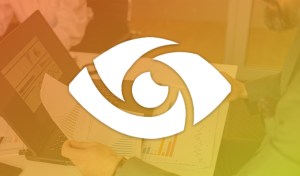Achievable Data Governance Using Microsoft Purview
Across companies, a major pain point is a lack of visibility into various data sources. With more companies undergoing digital transformation, many organizations find themselves on the verge of cloud and local, with more dispersed data sources than ever before. This disjointed architecture presents a great deal of complexity and makes it increasingly difficult for organizations to implement and maintain data governance.
In an attempt to address the transparency concerns that modern companies are facing, Microsoft recently launched Purview. Purview is a unified solution to support data governance across all of an organization’s sources and systems, whether your data lives in the cloud, on local hard drives, or in third-party software. Here’s a closer look at how it works.
What is Microsoft Purview?
The purpose of Microsoft Purview is to provide a unified platform in which businesses can manage all of their disjointed data. The platform provides a robust data map that updates automatically. With discovery and classification tools working behind-the-scenes, Purview is able to map not only data but the relationship between it, providing unique and highly valuable insights.
The goal of data governance is to improve data security, quality, and accessibility, and Microsoft Purview is able to check all of these boxes. Throughout your organization, users will be empowered with access to the right information, with the confidence of knowing that it’s up-to-date and trustworthy.
Features of Microsoft Purview
Microsoft Purview offers a variety of features that make it easier to utilize and integrate Purview across systems, providing an organization-wide solution to data governance.
- Create a unified map, even with a variety of sources. No matter where your data exists, Purview provides all-in-one visibility into your business’ data assets and the relationships between them.
- Easily integrate with various data sources using the Apache Atlas APIs. Your developers will find it fast and easy to pull all of your data into Purview thanks to excellent documentation on the user-friendly API tools.
- Built-in classifiers make it easy to control access and the tool supports data privacy by letting users label sensitive data quickly. When you label data in one place, it is also automatically reflected across Azure, Azure Power BI, Microsoft SQL Server, and Microsoft 365 to ensure consistency.
- Ensure that all data can be effortlessly discovered by the right users by assigning familiar terminology. Purview even has a built-in glossary of business and technical terms to ensure accessibility while eliminating the need for Excel dictionaries.
- Use the interactive tools to visualize data lineage, allowing you to instantly understand where a piece of data came from and how it relates to other data in your organization.
- Give your entire team access with the tools they need to power business intelligence, analytics, and machine learning initiatives.
Microsoft employs over 3,500 data privacy and security experts and invests more than one billion dollars each year into relevant research projects. All of that means that organizations can trust Azure, which is Purview’s underlying infrastructure. In addition to having more security certifications than any other cloud provider, Azure is also known to be fast and incredibly reliable, all of which is important for a business looking to better manage its data.
How Purview Supports Data Governance
Through data governance initiatives, organizations are able to ensure that all data is protected, usable, and accessible. To achieve these fundamental goals, organizations must first establish processes that secure their data. From there, they can invest in initiatives that help support data quality by controlling data access, deletion, and manipulation while also removing old data and enriching existing data with new information.
In addition to the above, data governance also requires a platform that is fast, organized, and user-friendly in order to support the accessibility goal that is fundamental to the profitability of data governance. Even with secure and high-quality data, a business simply would not continue investing in data governance if users were unable to utilize the data within. As such, a tool like Purview is crucial to ensuring all three goals can be achieved.
By turning data into an asset, Purview supports governance in the following ways:
- Creates a data catalog to improve visibility, understanding, and organization.
- Improve access to data by allowing users to semantically search for data assets.
- Control quality by ensuring that data is unique, complete, accurate, and accessible.
- Increase compliance by automating consumer update and removal requests.
- Gain visibility with interactive lineage and continuous insights into streaming data.
Purview simplifies data management by unifying data sources into one platform. While doing so, it supports data consistency by automatically classifying and labeling data across platforms, and it supports data accessibility through access controls and discoverability tools. In other words, Purview is an excellent platform on which businesses can create a successful and sustainable data governance solution.
Get Started with Purview
While Purview in itself does not create data governance for an organization that lacks it, it does provide a powerful platform that can greatly simplify the data governance process for companies of all sizes.
With the ability to unify and classify data from various sources, Purview is a reliable solution for improving visibility in a time when most organizations are faced with the challenges of a disparate hybrid environment.
However, before moving forward with any data governance plan, it’s essential that you complete a thorough assessment of your current environment, applications, and sources. We can help you evaluate your current processes and identify critical focal points so you can create an informed data governance strategy.
Ready to get started? Reach out to our team today to schedule your assessment.
